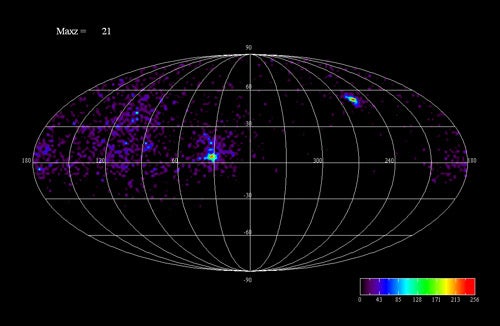October is not a month noted for meteor activity; its one major annual shower, the Orionids, barely reaches a rate of 25 meteors per hour on the peak night of October 21. This is not too impressive, especially when compared to the 80 per hour exhibited by the Perseids in August or the 100-per-hour displays of the Geminids in December. But this year’s Draconids, a shower that usually goes unnoticed, produced an unexpected meteor outburst October 8.
Most meteor showers are named for the constellation where the shower radiant (the spot where the meteors appear to come from) is located. In this case, that’s Draco the Dragon. This shower is just as often called the Giacobinids, however, reflecting part of the name of the comet — Giacobini-Zinner — that produces its meteors.
Past Draconid outbursts often had occurred if Comet Giacobini-Zinner had returned to perihelion (its closest approach to the Sun) just a couple of months before Earth passed near the comet’s orbit in October. By this logic, forecasters should have predicted a Draconid outburst, because the comet passed perihelion in July. However, the newly developed technique of meteor-stream modeling, which has been used with success in predicting Perseid and Leonid meteor-shower activity, indicated the bulk of the Draconids would pass well away from Earth this year. This information was passed on to spacecraft operators, who use meteor-shower forecasts when planning their operations.
The shower peak would have been visible in Asia, and the few reports gathered by the International Meteor Organization do show an outburst at about this time. They indicate a peak rate of only about 40 per hour though. The Ontario team’s new stream models may explain the apparent discrepancy. The models show Earth being hit by very small particles (less than one-tenth of a millimeter) ejected from Giacobini-Zinner back in 1946. Such small particles would have produced very faint meteors that are difficult to detect visually.
Fortunately, this was a minor outburst, and no spacecraft systems appear to have been affected. Meteor-shower forecasters — like myself — however, suddenly feel quite sympathetic to weather forecasters faced with a rainy day when they had predicted sunshine. This year, the Dragon showed a hint of its fire and reminded us that, sophisticated computer models notwithstanding, we still have lots to learn about the Draconids.










